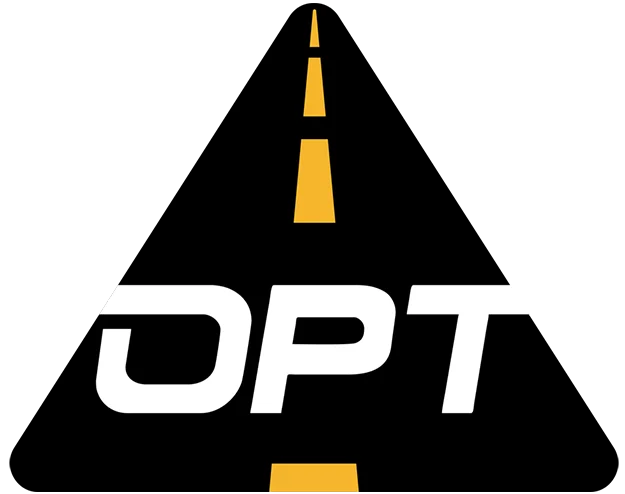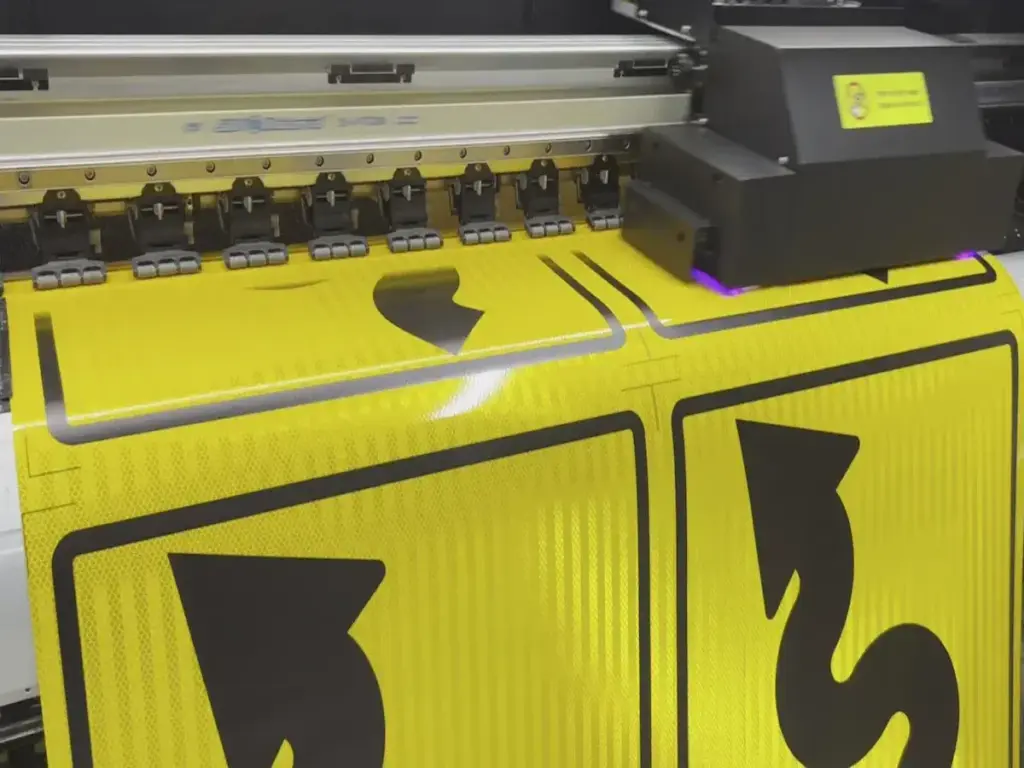
International trade connects businesses and customers across the globe, but it also brings unique challenges. When you’re dealing with after-sales service for products like traffic safety cones for sale, clear communication becomes essential. Language barriers can lead to miscommunication, safety compliance issues, and unhappy customers. Imagine assembling a product incorrectly or misunderstanding safety guidelines—these risks are real. Overcoming language barriers is key to ensuring customer satisfaction and maintaining safety standards. By addressing these challenges, you can build trust and deliver a seamless experience for your customers.
In the traffic equipment industry, where safety and precision are paramount, language barriers are especially critical. OPTsigns recognize the importance of overcoming these obstacles to serve our global customers effectively. With a diverse clientele across different regions, OPTsigns is committed to providing clear and accessible communication, ensuring that every customer receives the right support for their traffic safety cone purchases—regardless of location or language.
Challenges in After-Sales Service for Traffic Safety Cones

Miscommunication in Product Usage
Incorrect assembly or placement of traffic safety cones
When instructions aren’t clear, it’s easy to make mistakes. You might assemble or place traffic safety cones for sale incorrectly, which can lead to unsafe conditions. For example, if traffic safety cones for sale aren’t positioned properly, they might fail to guide traffic effectively. This could create confusion or even accidents. Miscommunication about assembly steps often stems from unclear instructions or language barriers.
OPTsigns recognize these challenges and work proactively to help our customers avoid such issues. To address common questions and concerns, OPTsigns have created a range of informative traffic safety cone blogs that provide detailed explanations and step-by-step guidance on assembly, placement, and safety compliance. Additionally, to further support our international customers, OPTsigns website features a multilingual option in the lower-left corner, allowing customers to easily switch to their preferred language for clearer instructions and more effective communication.
By providing these resources, OPTsigns ensures that customers have the tools and support they need to use our traffic safety cones correctly, no matter where they are in the world.
Misunderstanding safety guidelines and compliance requirements
Safety guidelines are critical, but they can be tricky to follow if they’re not explained well. You might misinterpret compliance requirements, especially if they’re written in a language you don’t fully understand. This can result in using the cones in ways that don’t meet local safety standards. Such misunderstandings can compromise safety and lead to penalties or fines.
Cultural and Linguistic Differences
Variations in communication styles and expectations
Every culture has its own way of communicating. What seems polite or clear to one person might feel abrupt or confusing to another. You might find that customers from different regions expect different levels of detail or tone in communication. These variations can make it harder to explain product usage or resolve issues effectively.
Challenges in addressing customer concerns effectively
When language differences come into play, addressing customer concerns can feel like solving a puzzle. You might struggle to understand their exact problem or explain the solution clearly. This can leave customers feeling frustrated or unheard, which isn’t great for building trust.
Limited Multilingual Resources
Lack of translated manuals or instructions
If you’ve ever tried to follow a manual in a language you don’t understand, you know how frustrating it can be. Without translated instructions, customers might guess their way through assembly or usage. This increases the risk of errors and dissatisfaction.
Insufficient multilingual customer support staff
Having multilingual support is essential in today’s global market. If your team can’t communicate in your customers’ preferred language, it’s tough to provide effective assistance. Customers might feel neglected or misunderstood, which can harm your reputation.
Practical Solutions for Overcoming Language Barriers
Multilingual Support Tools
Providing translated manuals and guides for traffic safety cones for sale
Imagine trying to assemble traffic safety cones for sale with instructions in a language you don’t understand. Frustrating, right? That’s why providing translated manuals and guides is a game-changer. When you offer clear instructions in multiple languages, you make it easier for customers to use your products correctly. This not only improves safety but also boosts customer satisfaction.
Offering multilingual customer service hotlines
Sometimes, customers need more than a manual—they need to talk to someone. A multilingual customer service hotline ensures they can get help in their preferred language. Whether it’s a question about product placement or compliance, having someone who speaks their language makes all the difference. It shows you care about their experience and are committed to solving their problems.
At OPTsigns, we understand that direct communication is essential for resolving issues quickly and efficiently. That’s why we offer a multilingual customer service hotline for all inquiries related to OPTsigns traffic safety cones for sale. OPTsigns support team is ready to assist customers in various languages, ensuring that any concerns about product use, safety standards, or shipping details are addressed promptly. Whether it’s guidance on correct placement or assistance with compliance, OPTsigns is dedicated to providing the support needed to make sure our customers have a seamless experience with our traffic safety cones for sale.
Cultural Sensitivity Training
Educating staff on cultural nuances and communication styles
Your team interacts with customers from all over the world. To make these interactions smoother, train your staff to understand cultural nuances. For example, some cultures value direct communication, while others prefer a more indirect approach. Knowing these differences helps your team connect better with customers and avoid misunderstandings.
Conducting workshops to improve cross-cultural communication skills
Workshops are a great way to build your team’s confidence in handling diverse customers. These sessions can include role-playing exercises and real-world scenarios. By practicing how to address cultural differences, your staff becomes more effective at resolving issues and building trust.
Leveraging Non-Verbal Communication
Using gestures and visual cues to enhance understanding
Words aren’t always enough, especially when language barriers exist. That’s where nonverbal cues like gestures and body language come in. For instance, pointing to a diagram or using hand signals can clarify instructions. These small actions can make a big difference in ensuring your message gets across.
Maintaining eye contact to build trust and clarity
Eye contact is a universal way to show you’re engaged and trustworthy. When you look someone in the eye, it signals that you’re listening and taking their concerns seriously. This simple act can bridge gaps in understanding and create a more positive interaction.
Tip: Combining verbal explanations with nonverbal cues like body language and eye contact can significantly improve communication, especially when dealing with multilingual customers.
Technology as a Bridge for Communication Gaps
Real-Time Translation Tools
Software for translating technical documents and manuals
Imagine receiving a technical manual in a language you don’t understand. Frustrating, right? That’s where translation software comes in. These tools can quickly convert technical documents, like assembly guides or safety instructions, into multiple languages. You can ensure your customers always have access to clear, accurate information. Tools like SDL Trados or MemoQ are great examples of software that can handle complex translations while maintaining the original meaning.
Real-time translation tools for customer interactions
When customers reach out with questions, time is of the essence. Real-time translation tools, like Google Translate or Microsoft Translator, can help you communicate instantly. These tools allow you to type or speak in your language while the software translates it into your customer’s preferred language. It’s like having a multilingual assistant at your fingertips. This approach not only saves time but also makes your customers feel valued and understood.
AI-Powered Chatbots
Automating responses to common customer queries in multiple languages
AI-powered chatbots are game-changers for after-sales service. They can handle frequently asked questions, like “How do I assemble this cone?” or “What are the safety guidelines?” in multiple languages. By automating these responses, you free up your team to focus on more complex issues. Plus, chatbots like ChatGPT or IBM Watson can learn and improve over time, making them even more effective.
Ensuring 24/7 availability for global customers
Your customers don’t all live in the same time zone. That’s why having a chatbot available 24/7 is so important. These bots can provide instant support, no matter when or where your customers need help. Whether it’s midnight in Tokyo or early morning in New York, your chatbot ensures no question goes unanswered.
Digital Platforms for Multilingual Support
Online portals with multilingual interfaces
An online portal with a multilingual interface can be a lifesaver for your customers. These platforms allow users to access product information, troubleshooting guides, and FAQs in their preferred language. You can even include video tutorials with subtitles to make things even clearer. A well-designed portal shows your commitment to making things easy for your customers.
OPTsigns understand the importance of easy access to reliable information. That’s why on every product page, including those for our traffic safety cones for sale, we provide a comprehensive FAQ section. These FAQs address common concerns, from assembly and placement to safety compliance. By offering clear, concise answers in multiple languages, OPTsigns ensure our global customers can quickly find the information they need. This dedication to clarity and support helps our customers feel confident in their purchases and use of OPTsigns traffic safety cones for sale.
Mobile apps for easy access to translated resources
Mobile apps take convenience to the next level. Imagine your customer needs help while setting up traffic safety cones for sale on-site. With a mobile app, they can quickly access translated manuals, video guides, or even chat with support. Apps like these make it simple for customers to get the help they need, wherever they are.
Tip: Investing in technology not only improves communication but also builds trust. When customers see you’ve gone the extra mile to meet their needs, they’re more likely to stay loyal to your brand.
Long-Term Strategies for Success

Staff Training and Development
Ongoing language and cultural sensitivity training
Your team plays a huge role in shaping the customer experience. Regular training on language and cultural sensitivity helps them communicate better with customers from different backgrounds. These sessions can include practical exercises, like role-playing scenarios, to make learning engaging. When your staff understands cultural nuances, they can avoid misunderstandings and build stronger connections with customers.
Encouraging staff to learn new languages relevant to key markets
Encouraging your team to learn new languages can make a big difference. Imagine how much easier it would be for your customers if they could speak directly with someone in their native language. You don’t need everyone to become fluent, but even basic conversational skills can improve the customer experience. Plus, it shows your commitment to making every interaction as smooth as possible.
Customer Feedback Mechanisms
Collecting feedback on communication effectiveness
You can’t improve what you don’t measure. That’s why collecting feedback on how well your team communicates is so important. Simple surveys or follow-up emails can help you understand what’s working and what isn’t. Ask customers if they felt understood and if their concerns were addressed clearly. Their input is invaluable for refining your approach.
Using feedback to improve multilingual services
Once you’ve gathered feedback, use it to make meaningful changes. If customers mention issues with understanding instructions or interacting with support, address those gaps. Update your multilingual knowledge base or provide additional training for your team. Listening to your customers and acting on their suggestions shows you care about their satisfaction.
Building a Multilingual Knowledge Base
Centralized repository of translated resources and FAQs
A multilingual knowledge base is a must-have for global businesses. It’s a one-stop shop where customers can find translated manuals, FAQs, and troubleshooting guides. By centralizing these resources, you make it easier for customers to find the information they need without having to contact support. This not only saves time but also enhances the customer experience.
Regular updates to ensure accuracy and relevance
Your multilingual knowledge base should never be static. Regular updates keep it accurate and relevant. Add new FAQs as they arise and review existing translations to ensure they align with current standards. Keeping your knowledge base fresh shows your dedication to providing top-notch support and maintaining customer satisfaction.
Tip: A well-maintained multilingual knowledge base reduces the need for live support, freeing up your team to focus on more complex issues.
Overcoming language barriers in after-sales service isn’t just about solving communication issues—it’s about creating a safer and more satisfying experience for your customers. By prioritizing clear communication, you ensure proper product usage and compliance with safety standards.
Remember: Investing in multilingual support and technology isn’t just a short-term fix. It’s a long-term strategy that builds trust, improves customer loyalty, and sets your business apart in a global market.
When you make communication a priority, you’re not just selling traffic safety cones—you’re delivering confidence and reliability. 🌍
FAQ
What are the benefits of offering multilingual customer support?
Multilingual support helps you connect with customers in their preferred language. It reduces misunderstandings, improves satisfaction, and builds trust. When customers feel understood, they’re more likely to stay loyal to your brand. Plus, it shows you care about their experience.
How can I ensure my translated manuals are accurate?
Use professional translation services or specialized software like SDL Trados. Always review translations with native speakers to ensure clarity and accuracy. Regularly update manuals to reflect any product changes. This guarantees your customers get the right information every time.
Are AI-powered chatbots reliable for multilingual support?
Yes, they’re reliable for handling common queries. AI chatbots provide instant responses in multiple languages, ensuring 24/7 availability. They’re not perfect for complex issues, but they’re great for quick answers. Over time, they learn and improve, making them even more effective.
What’s the best way to train staff for cultural sensitivity?
Start with workshops that focus on real-world scenarios. Role-playing exercises help your team practice handling diverse customer interactions. Encourage open discussions about cultural differences. Ongoing training ensures your staff stays prepared to communicate effectively with customers from various backgrounds.
How does technology help overcome language barriers?
Technology bridges gaps with tools like real-time translators, multilingual chatbots, and mobile apps. These solutions make communication faster and easier. They also ensure customers get accurate information in their language, improving their overall experience.
Tip: Combine technology with human support for the best results. While tools are helpful, personal interaction builds stronger connections.

















